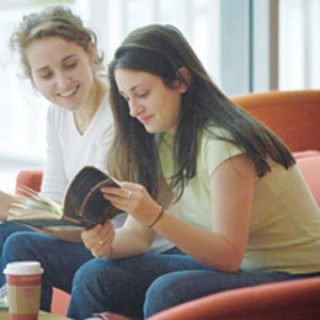Smith College Profcast
Follow Smith College ProfcastIn this series, Smith College faculty from a range of academic disciplines discuss timely and thought-provoking topics related to their teaching, research and academic interests. The series showcases a range of ideas and perspectives, the vibrant community of scholars at Smith, and the intellectual…
- Mar 22, 2017 LATEST EPISODE
- infrequent NEW EPISODES
- 16m AVG DURATION
- 14 EPISODES
More podcasts from Smith College
Latest episodes from Smith College Profcast

Lester Tomé, assistant professor of dance, wants to shine a light on how ballet has become a truly international dance form. Focusing on Cuba as a detailed case study, he pushes his scholarly analysis beyond the Eurocentric models of ballet to highlight the experience of Cuban dancers, choreographers and teachers. Professor Tomé’s research on the Cuban ballet has been funded through fellowships from the National Endowment for the Humanities and Harvard University’s David Rockefeller Center for Latin American Studies. His book on the topic is forthcoming with Oxford University Press.

Extended audio interview. Lester Tomé, assistant professor of dance, wants to shine a light on how ballet has become a truly international dance form. Focusing on Cuba as a detailed case study, he pushes his scholarly analysis beyond the Eurocentric models of ballet to highlight the experience of Cuban dancers, choreographers and teachers. Professor Tomé’s research on the Cuban ballet has been funded through fellowships from the National Endowment for the Humanities and Harvard University’s David Rockefeller Center for Latin American Studies. His book on the topic is forthcoming with Oxford University Press. With Smith College Insight editor, Jan McCoy Ebbets.

Every year Susannah Howe, senior lecturer in engineering, shepherds a group of Smith students through the Design Clinic, a capstone two-semester course in which students collaborate in teams on applied design projects sponsored by industry and government. Listen as Howe, the design clinic director, explains the ways in which students work and the course unfolds each year.

Full audio interview. Susannah Howe, senior lecturer in engineering, discusses the Design Clinic with Smith College Insight editor, Jan McCoy Ebbets.

Suzan Edwards, L. Clark Seelye Professor of Astronomy, studies stars that are forming deep within molecular clouds in the galaxy. The gravitational collapse of rotating, denser-than-average cores within a molecular cloud results in the creation of a central protostar surrounded by a flattened spinning disk of gaseous material, with dimensions comparable to the solar system.

Full audio interview. Professor of Astronomy Suzan Edwards discusses how the study of star formation is changing with Smith College Insight editor, Jan McCoy Ebbets.

Professor of Theatre Ellen Kaplan discusses how she helps her students process the sensitive and difficult material that they may encounter in her acting classes and why she does not believe in the use of trigger warnings.

Full audio interview. Professor of Theatre Ellen Kaplan discusses how she helps students process sensitive material with Smith College Insight editor, Jan McCoy Ebbets.

Professor of Government Marc Lendler started teaching his colloquium The Clinton Years almost as soon as Bill Clinton left the presidency. At first it was an experiment in assessing a presidency immediately after it ended, he says, "before mainstream interpretations got locked in." He did a similar examination with a course covering the eight years of the George W. Bush presidency. He plans to teach The Clinton Years once more before he replaces it with a course in the Barack Obama years.

The full audio interview. Professor of Government Marc Lendler discusses the Bill Clinton presidency with Smith College Insight editor, Jan McCoy Ebbets.

Steven Heydemann, Janet Wright Ketcham 1953 Professor in Middle East Studies, discusses the Syrian uprising and the conflict dynamics that continue to unfold in Syria today.

Extended audio interview. Steven Heydemann, Janet Wright Ketcham 1953 Professor in Middle East Studies, discusses the Syrian uprising and the conflict dynamics that continue to unfold in Syria today.

Video-Smith physicist explains historic discovery of gravitational waves.

Extended audio interview. Smith physicist Gary Felder explains why the discovery of gravitational waves, first detected in September 2015 but predicted by Albert Einstein a century ago, was an enormous historic event.

















